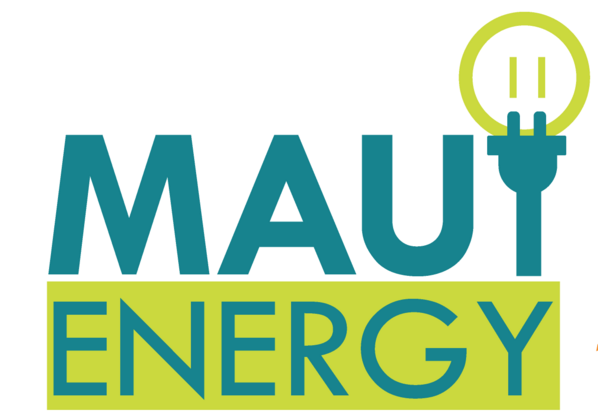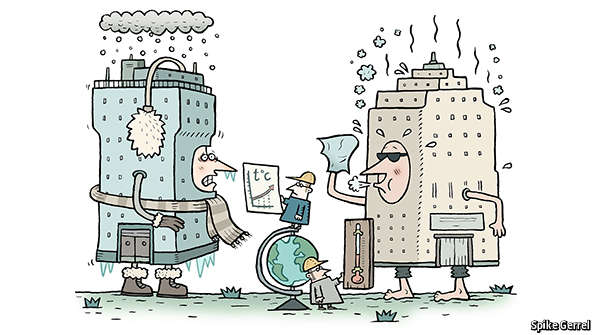by HEC Team | Dec 22, 2015 | 2016, News

Aloha and Season’s Greetings,
We are pleased to announce the MAUI ENERGY CONFERENCE, March 16-18, 2016 at the Maui Arts & Cultural Center!
Join energy experts and stakeholders from across the U.S. to learn about the latest advances in clean energy and how Hawaii plans to achieve the new 100% RPS target. Explore Hawaii’s new energy planning model with us and see how it applies to your energy goals and landscape “back home.” The Conference will seek to answer:
- Are these targets realistic and are the utilities on board?
- How do you mitigate energy supply and price disruptions when transitioning from carbon based fuels to renewables?
- How important is having a diversified portfolio of renewable energy sources?
- How much will this really cost?
Visit the Program page for details on this year’s program.
And don’t miss the opportunity to boost your company’s presence at the conference with an early sponsor and exhibit commitment. The Sponsor & Exhibit Kit is available for download now!
Our Conference Program Committee and Team look forward to welcoming you in March and to answering any questions you may have in the meantime.
See you in the New Year,
The Maui Energy Conference Team
by HEC Team | Dec 16, 2015 | 2016, News

First Wind’s Kawailoa Wind project is seen in this file photo. Wind supplied 29.1 percent of all renewable energy in Hawaii in 2014.
Hawaii is a little more than a fifth of the way — 21.1 percent — to its new landmark goal of achieving 100 percent renewable energy by 2045, according to a new report.
The state’s previous target of 15 percent was surpassed two years early, in 2013, and in 2014, the figure increased to 21.1 percent.
In terms of resources, wind led the way by supplying 29.1 percent of the total renewable resource pie in 2014, followed by rooftop solar photovoltaics (27.3 percent), biomass (21.7 percent), geothermal (12.3 percent), hydroelectric (4.3 percent), commercial solar (3.4 percent) and biofuels (1.9 percent).
The 2015 Energy Resources Coordinator’s Annual Report, which highlights the state’s clean energy progress in the last 12 months, among other things, noted that Hawaii achieved 16.8 percent of its efficiency goal at the end of 2014.
The state must double this percentage by 2030 to reach the goal of a 30 percent reduction in energy consumption through efficiency measures.
The report also highlighted the 60 renewable energy projects located across the state, including 19 hydroelectric, 17 solar, nine wind, seven biofuel, three biomass, two waste-to-energy, two ocean and one geothermal.
These projects have the capacity to generate an estimated 150.5 million kilowatt-hours per month, which is enough to power about 292,874 Hawaii homes a year for the next 10 to 20 years.
The value of solar projects to the construction industry also was highlighted in the report, with a projection that $350.1 million, or 8.6 percent of total construction spending, will be spent on these types of projects by the end of 2015, up from $244.6 million, or 7.4 percent of total construction spending. The peak was reached in 2012, with $753.7 million, or 28.5 percent, of total construction spending.
Download Report: http://energy.hawaii.gov/wp-content/uploads/2014/12/DBEDT_2015ERC-Report_Nov2015.pdf


by HEC Team | Aug 8, 2015 | News
Originally posted on EcoWatch
Hawaii made waves earlier this year with the announcement that it plans to transition its electric grid to 100 percent renewables by 2045. This is the most aggressive target in the U.S. and it means that the state will serve as a testbed for bringing large amounts of variable renewables onto the grid. It should be watched closely by grid managers everywhere.
It’s no coincidence that Hawaii leads the nation in its renewable ambitions. As a group of islands, Hawaii faces unique energy challenges and it has worked closely with the U.S. Department of Energy to analyze the potential of solar energy and examine the challenges of integrating a variety of renewables into its energy mix.
From one perspective, an island seems like a hard place to use variable renewable energy like wind and solar. Island grids are usually isolated, so they can’t rely on power from the mainland grid when there’s no sun or wind. There are some exceptions, like the Danish island of Samso. Island grids generally have to pay more attention to backup generation and energy storage than mainland grids, raising the overall costs of renewables.
On the other hand, most islands rely on fuel imports to run their grid. These shipments of diesel, oil or natural gas are very expensive and anything that can reduce or eliminate them can mean big savings. It also means less reliance on imports, increasing energy security. So shifting to fuel-free renewables like solar and wind saves money on this side of the ledger.
How do these two factors balance out in practice? The answer is clear in the growing number of island communities around the world that are moving quickly to adopt renewables.
Read the full article on EcoWatch

by HEC Team | Aug 3, 2015 | News
The Clean Power Plan is a Landmark Action to Protect Public Health, Reduce Energy Bills for Households and Businesses, Create American Jobs, and Bring Clean Power to Communities across the Country
Original Press Release
Today at the White House, President Obama and Environmental Protection Agency (EPA) Administrator Gina McCarthy will release the final Clean Power Plan, a historic step in the Obama Administration’s fight against climate change.
We have a moral obligation to leave our children a planet that’s not polluted or damaged. The effects of climate change are already being felt across the nation. In the past three decades, the percentage of Americans with asthma has more than doubled, and climate change is putting those Americans at greater risk of landing in the hospital. Extreme weather events – from more severe droughts and wildfires in the West to record heat waves – and sea level rise are hitting communities across the country. In fact, 14 of the 15 warmest years on record have all occurred in the first 15 years of this century and last year was the warmest year ever. The most vulnerable among us – including children, older adults, people with heart or lung disease, and people living in poverty – are most at risk from the impacts of climate change. Taking action now is critical.
The Clean Power Plan establishes the first-ever national standards to limit carbon pollution from power plants. We already set limits that protect public health by reducing soot and other toxic emissions, but until now, existing power plants, the largest source of carbon emissions in the United States, could release as much carbon pollution as they wanted.
The final Clean Power Plan sets flexible and achievable standards to reduce carbon dioxide emissions by 32 percent from 2005 levels by 2030, 9 percent more ambitious than the proposal. By setting carbon pollution reduction goals for power plants and enabling states to develop tailored implementation plans to meet those goals, the Clean Power Plan is a strong, flexible framework that will:
- Provide significant public health benefits – The Clean Power Plan, and other policies put in place to drive a cleaner energy sector, will reduce premature deaths from power plant emissions by nearly 90 percent in 2030 compared to 2005 and decrease the pollutants that contribute to the soot and smog and can lead to more asthma attacks in kids by more than 70 percent. The Clean Power Plan will also avoid up to 3,600 premature deaths, lead to 90,000 fewer asthma attacks in children, and prevent 300,000 missed work and school days.
- Create tens of thousands of jobs while ensuring grid reliability;
- Drive more aggressive investment in clean energy technologies than the proposed rule, resulting in 30 percent more renewable energy generation in 2030 and continuing to lower the costs of renewable energy.
- Save the average American family nearly $85 on their annual energy bill in 2030, reducing enough energy to power 30 million homes, and save consumers a total of $155 billion from 2020-2030;
Give a head start to wind and solar deployment and prioritize the deployment of energy efficiency improvements in low-income communities that need it most early in the program through a Clean Energy Incentive Program; and
- Continue American leadership on climate change by keeping us on track to meet the economy-wide emissions targets we have set, including the goal of reducing emissions to 17 percent below 2005 levels by 2020 and to 26-28 percent below 2005 levels by 2025.
KEY FEATURES OF THE CLEAN POWER PLAN
The final Clean Power Plan takes into account the unprecedented input EPA received through extensive outreach, including the 4 million comments that were submitted to the agency during the public comment period. The result is a fair, flexible program that will strengthen the fast-growing trend toward cleaner and lower-polluting American energy. The Clean Power Plan significantly reduces carbon pollution from the electric power sector while advancing clean energy innovation, development, and deployment. It ensures the U.S. will stay on a path of long-term clean energy investments that will maintain the reliability of our electric grid, promote affordable and clean energy for all Americans, and continue United States leadership on climate action. The Clean Power Plan:
- Provides Flexibility to States to Choose How to Meet Carbon Standards: EPA’s Clean Power Plan establishes carbon pollution standards for power plants, called carbon dioxide (CO2) emission performance rates. States develop and implement tailored plans to ensure that the power plants in their state meet these standards– either individually, together, or in combination with other measures like improvements in renewable energy and energy efficiency. The final rule provides more flexibility in how state plans can be designed and implemented, including: streamlined opportunities for states to include proven strategies like trading and demand-side energy efficiency in their plans, and allows states to develop “trading ready” plans to participate in “opt in” to an emission credit trading market with other states taking parallel approaches without the need for interstate agreements. All low-carbon electricity generation technologies, including renewables, energy efficiency, natural gas, nuclear and carbon capture and storage, can play a role in state plans.
- More Time for States Paired With Strong Incentives for Early Deployment of Clean Energy: State plans are due in September of 2016, but states that need more time can make an initial submission and request extensions of up to two years for final plan submission. The compliance averaging period begins in 2022 instead of 2020, and emission reductions are phased in on a gradual “glide path” to 2030. These provisions to give states and companies more time to prepare for compliance are paired with a new Clean Energy Incentive Program to drive deployment of renewable energy and low-income energy efficiency before 2022.
- Creates Jobs and Saves Money for Families and Businesses: The Clean Power Plan builds on the progress states, cities, and businesses and have been making for years. Since the beginning of 2010, the average cost of a solar electric system has dropped by half and wind is increasingly competitive nationwide. The Clean Power Plan will drive significant new investment in cleaner, more modern and more efficient technologies, creating tens of thousands of jobs. Under the Clean Power Plan, by 2030, renewables will account for 28 percent of our capacity, up from 22 percent in the proposed rule. Due to these improvements, the Clean Power Plan will save the average American nearly $85 on their energy bill in 2030, and save consumers a total of $155 billion through 2020-2030, reducing enough energy to power 30 million homes.
- Rewards States for Early Investment in Clean Energy, Focusing on Low-Income Communities: The Clean Power Plan establishes a Clean Energy Incentive Program that will drive additional early deployment of renewable energy and low-income energy efficiency. Under the program, credits for electricity generated from renewables in 2020 and 2021 will be awarded to projects that begin construction after participating states submit their final implementation plans. The program also prioritizes early investment in energy efficiency projects in low-income communities by the Federal government awarding these projects double the number of credits in 2020 and 2021. Taken together, these incentives will drive faster renewable energy deployment, further reduce technology costs, and lay the foundation for deep long-term cuts in carbon pollution. In addition, the Clean Energy Incentive Plan provides additional flexibility for states, and will increase the overall net benefits of the Clean Power Plan.
- Ensures Grid Reliability: The Clean Power Plan contains several important features to ensure grid reliability as we move to cleaner sources of power. In addition to giving states more time to develop implementation plans, starting compliance in 2022, and phasing in the targets over the decade, the rule requires states to address reliability in their state plans. The final rule also provides a “reliability safety valve” to address any reliability challenges that arise on a case-by-case basis. These measures are built on a framework that is inherently flexible in that it does not impose plant-specific requirements and provides states flexibility to smooth out their emission reductions over the period of the plan and across sources.
- Continues U.S. Leadership on Climate Change: The Clean Power Plan continues United States leadership on climate change. By driving emission reductions from power plants, the largest source of U.S. greenhouse gas emissions, the Clean Power Plan builds on prior Administration steps to reduce emissions, including historic investments to deploy clean energy technologies, standards to double the fuel economy of our cars and light trucks, and steps to reduce methane pollution. Taken together these measures put the United States on track to achieve the President’s near-term target to reduce emissions in the range of 17 percent below 2005 levels by 2020, and lay a strong foundation to deliver against our long-term target to reduce emissions 26 to 28 percent below 2005 levels by 2025. The release of the Clean Power Plan continues momentum towards international climate talks in Paris in December, building on announcements to-date of post-2020 targets by countries representing 70 percent of global energy based carbon emissions.
- Sets State Targets in a Way That Is Fair and Is Directly Responsive to Input from States, Utilities, and Stakeholders: In response to input from stakeholders, the final Clean Power Plan modifies the way that state targets are set by using an approach that better reflects the way the electricity grid operates, using updated information about the cost and availability of clean generation technologies, and establishing separate emission performance rates for all coal plants and all gas plants.
- Maintains Energy Efficiency as Key Compliance Tool: In addition to on-site efficiency and greater are reliance on low and zero carbon generation, the Clean Power Plan provides states with broad flexibility to design carbon reduction plans that include energy efficiency and other emission reduction strategies. EPA’s analysis shows that energy efficiency is expected to play a major role in meeting the state targets as a cost-effective and widely-available carbon reduction tool, saving enough energy to power 30 million homes and putting money back in ratepayers’ pockets.
- Requires States to Engage with Vulnerable Populations: The Clean Power Plan includes provisions that require states to meaningfully engage with low-income, minority, and tribal communities, as the states develop their plans. EPA also encourages states to engage with workers and their representatives in the utility and related sectors in developing their state plans.
- Includes a Proposed Federal Implementation Plan: EPA is also releasing a proposed federal plan today. This proposed plan will provide a model states can use in designing their plans, and when finalized, will be a backstop to ensure that the Clean Power Plan standards are met in every state.
Since the Clean Air Act became law more than 45 years ago with bipartisan support, the EPA has continued to protect the health of communities, in particular those vulnerable to the impacts of harmful air pollution, while the economy has continued to grow. In fact, since 1970, air pollution has decreased by nearly 70 percent while the economy has tripled in size. The Clean Power Plan builds on this progress, while providing states the flexibility and tools to transition to clean, reliable, and affordable electricity.
BUILDING ON PROGRESS
The Clean Power Plan builds on steps taken by the Administration, states, cities, and companies to move to cleaner sources of energy.Solar electricity generation has increased more than 20-fold since 2008, and electricity from wind has more than tripled. Efforts such as the following give us a strong head start in meeting the Clean Power Plan’s goals:
- 50 states with demand-side energy efficiency programs
- 37 states with renewable portfolio standards or goals
- 10 states with market-based greenhouse gas reduction programs
- 25 states with energy efficiency standards or goals
Today’s actions also build on a series of actions the Administration is taking through the President’s Climate Action Plan to reduce the dangerous levels of carbon pollution that are contributing to climate change, including:
- Standards for Light and Heavy-Duty Vehicles: Earlier this summer, the EPA and the Department of Transportation proposed the second phase of fuel efficiency and greenhouse gas standards for medium- and heavy-duty vehicles, which if finalized as proposed will reduce 1 billion tons of carbon pollution. The proposed standards build on the first phase of heavy-duty vehicle requirements and standards for light-duty vehicles issued during the President’s first term that will save Americans $1.7 trillion, reduce oil consumption by 2.2 million barrels per day by 2025, and slash greenhouse gas emissions by 6 billion metric tons through the lifetime of the program.
- Low Income Solar: Last month, the White House announced a new initiative to increase access to solar energy for all Americans, in particular low-and moderate income communities, and build a more inclusive workforce. The initiative will help families and businesses cut their energy bills through launching a National Community Solar Partnership to unlock access to solar for the nearly 50 percent of households and business that are renters or do not have adequate roof space to install solar systems and sets a goal to install 300 megawatts (MW) of renewable energy in federally subsidized housing by 2020. Through this initiative housing authorities, rural electric co-ops, power companies, and organizations in more than 20 states across the country committed to put in place more than 260 solar energy projects and philanthropic and impact investors, states, and cities are committed to invest $520 million to advance community solar and scale up solar and energy efficiency for low- and moderate- income households. The initiative also includes AmeriCorps funding to deploy solar and create jobs in underserved communities and a commitment from the solar industry to become the most diverse sector of the U.S. energy industry.
- Economy-Wide Measures to Reduce other Greenhouse Gases: EPA and other agencies are taking actions to cut methane emissions from oil and gas systems, landfills, coal mining, and agriculture through cost-effective voluntary actions and common-sense standards. At the same time, the U.S. Department of State is working to slash global emissions of potent industrial greenhouse gases, called hydrofluorocarbons (HFCs), through an amendment to the Montreal Protocol; EPA is cutting domestic HFC emissions through its Significant New Alternatives Policy (SNAP) program; and, the private sector has stepped up with commitments to cut global HFC emissions equivalent to 700 million metric tons of carbon pollution through 2025.
- Investing in Coal Communities, Workers, and Communities: In February, as part of the President’s FY 2016 budget, the Administration released the POWER+ Plan to invest in workers and jobs, address important legacy costs in coal country, and drive the development of coal technology. The Plan provides dedicated new resources for economic diversification, job creation, job training, and other employment services for workers and communities impacted by layoffs at coal mines and coal-fired power plants; includes unprecedented investments in the health and retirement security of mineworkers and their families and the accelerated clean-up of hazardous coal abandoned mine lands; and provides new tax incentives to support continued technology development and deployment of carbon capture, utilization, and sequestration technologies.
- Energy Efficiency Standards: DOE set a goal of reducing carbon pollution by 3 billion metric tons cumulatively by 2030 through energy conservation standards issued during this Administration. DOE has already finalized energy conservation standards for 29 categories of appliances and equipment, as well as a building code determination for commercial buildings. These measures will also cut consumers’ annual electricity bills by billions of dollars.
- Investing in Clean Energy: In June the White House announced more than $4 billion in private-sector commitments and executive actions to scale up investment in clean energy innovation, including launching a new Clean Energy Impact Investment Center at the U.S. Department of Energy (DOE) to make information about energy and climate programs at DOE and other government agencies accessible and more understandable to the public, including to mission-driven investors
by HEC Team | Jun 4, 2015 | News

The Economist published the attached timely article about energy trends, efficiencies, and the relationship between utilities and consumers. In light of our recent conference, it makes interesting reading.
Click here to read the article

by HEC Team | May 13, 2015 | 2015, News
Aloha,
We are pleased to let you know that the videotaped proceedings are now available from the Conference.
If you missed the conference, watch it now on our YouTube channel. Watch Now!






